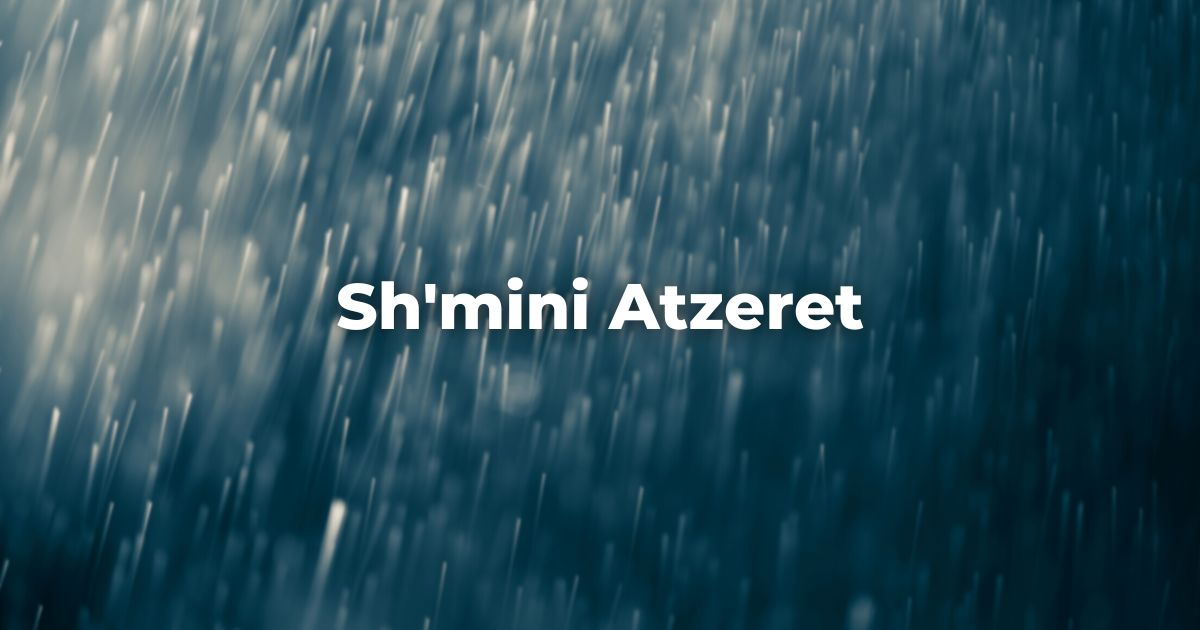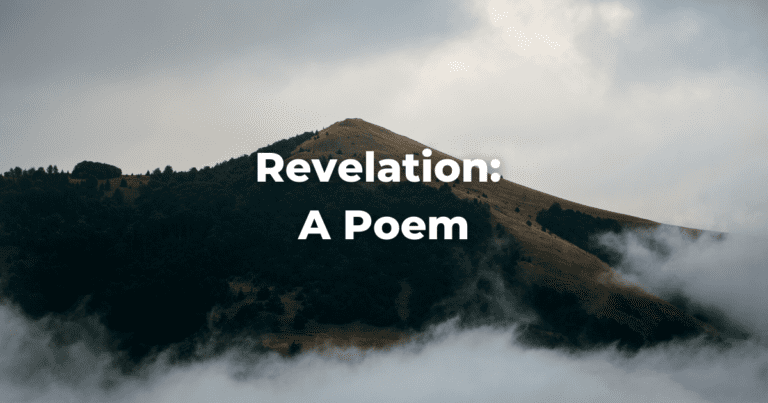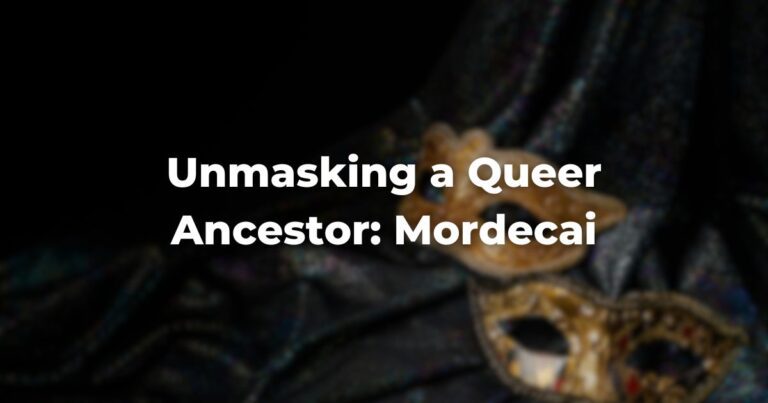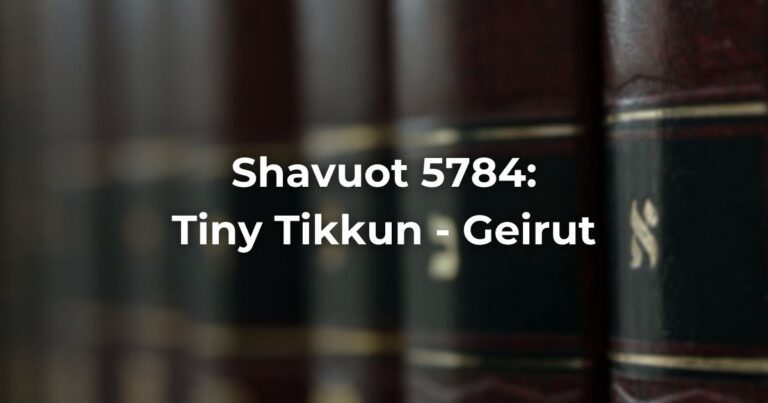The final two days of Sukkot are, at least formally, a totally separate holiday.
Where does Sh’mini Atzeret come from?
The TorahRefers to the first five books of the Hebrew Bible, the Tanakh, also called the Five Books of Moses, Pentateuch or the Hebrew equivalent, Humash. This is also called the Written Torah. The term may also refer to teachings that expound on Jewish tradition. Read more itself makes this clear and unclear at the same time, defining Sh’mini Atzeret as the eighth day of Sukkot at the same time that it grants it independent existence in the festival calendar: “Seven days you shall bring gifts to God,” the Torah states, “and then, on the eighth day, you shall observe a sacred festival and bring a gift to God; it is to be a solemn gathering” (Hebrew: atzeret; Leviticus 23:36).
Unfortunately, the Torah does not offer any additional details regarding the nature of this eighth day of assembly.
Some suggest that since the pilgrims of ancient times had traveled long distances to be in Jerusalem for Sukkot, it was a merely a kindness for Scripture to add one additional day of enforced leisure and worship to the festival.
Others imagined that it was, so to speak, God whom the Torah was treating kindly, almost as though God could be imagined to wish for one final day to enjoy the pilgrims’ presence in the Holy City (Rashi on Leviticus 23:36).
Still others suggest that it demonstrates a reluctance on the pilgrims’ own part to leave God’s holy presence.
But whatever the real reason for Sh’mini Atzeret, the holiday season finally concludes at the end of Sukkot. After celebrating all these demanding yet endlessly satisfying holy days, it is now time to return to a more normal routine.
What does or does not happen on Sh’mini Atzeret?
If it is not clear exactly what Scripture means Sh’mini Atzeret to be, it is clear what it is not.
It is not, for example, Sukkot. As a result, we do not continue the observances that are most notably connected to that holiday: the lulav and the etrog are not used during the service and dwelling in the sukkah is not required.
There are actually a variety of customs with respect to eating in the sukkah on Sh’mini Atzeret. Some people do not use the sukkah at all, but others continue to eat in it and even to say Kiddush in it.
No one, however, recites the blessing over “dwelling” in the sukkah on Sh’mini Atzeret, however, because doing so is not, formally speaking, the fulfillment of a commandment.
Find Sh’mini Atzeret candle lighting information here.
Liturgy
The liturgy of Sh’mini Atzeret is very much like the liturgy of other festival days. Where the worshiper is called upon to name the festival, however, this phrase is inserted into the text of the prayers:
…יוֹם הַשְׁמִינִי חַג הַעֲצֶרֶת הָזֶה.
…yom ha-sh’mini ḥag ha-atzeret ha-zeh.
…this eighth day of festival observance.
The Torah reading for Sh’mini Atzeret is Deuteronomy 14:22–16:17, which describes the festival calendar of ancient Israel.
The reading is divided into five aliyot when the festival falls on a weekday, and into seven aliyot when it falls on Shabbat.
The maftir portion read from the second Torah is Numbers 29:35–30:1.
The haftarah is 1 Kings 8:54–66, an appropriate selection because it cites the blessing that begins with the words ba-yom ha-sh’mini (on the eighth day) declaimed by King Solomon on the eighth day of the celebration dedicating the Temple in Jerusalem.
Two notable liturgical additions for Sh’mini Atzeret are the recitation of the Yizkor Service and the prayer for rain that is added into the second blessing of the Amidah during the Musaf Service when the cantor or prayer leader repeats the prayer aloud.
Prayer for rain
The text of this prayer may be found in any traditional prayerbook:
מַשִּׁיב הָרֽוּחַ וּמוֹרִיד הַגֶּֽשֶׁם.
Mashiv ha-ru·aḥ u-morid ha-gashem.
Let the wind return and let the rain fall.
It is customary for the cantor or the prayer leader to don a white robe, colloquially called a kittel by Ashkenazic Jews, for the recitation of this prayer and to use a special melody, reminiscent of certain tunes sung during the High Holidays, in chanting the prayer.
The prayer concludes with a declaration that it is God who causes the wind to blow and the rain to fall.
From this moment forward, these words are interpolated into the second blessing of the Amidah and remain in place until the prayer for dew is recited on the first day of Passover.
It is the custom in some synagogues for worshipers to include these words in the Amidah when it is recited silently, even before the cantor or prayer leader has changed them aloud in the repetition of the Amidah (comment of the Rema to SA Oraḥ Ḥayyim 114:2).
Other congregations wait until after the cantor or prayer leader chants the prayer before instructing worshipers to include it in their personal prayers. In such synagogues, therefore, the first time worshipers include theses words in the silent Amidah would be during the Afternoon Service on Sh’mini Atzeret:
מַשִּׁיב הָרֽוּחַ וּמוֹרִיד הַגֶּֽשֶׁם.
Mashiv ha-ru·aḥ u-morid ha-gashem
Let the wind return and let the rain fall.
We begin including this prayer for rain at the end of Sukkot and stop reciting it just before Passover because pilgrims to Jerusalem in ancient times did not wish for rain during either pilgrimage holiday.
The prayer for rain recited on Sh’mini Atzeret and its companion prayer for dew recited on the first day of Passover are intimately connected to the cycle of seasons in the Land of Israel.
The ancients needed little reminder of the importance of regular rainfall (or of life-sustaining dew during the dry season), but it sometimes takes a hurricane or an earthquake to remind moderns to what extent we remain at the mercy of natural forces far beyond human control.
This is one of the reasons we retain these prayers, even outside the Land of Israel where they are the most relevant in terms of the actual climate. Reciting them is also a dramatic affirmation of the connection Jewish worshipers the world over maintain to the Land of Israel.
Adapted with permission from The Observant Life.
Authors
-

-

The Observant Life: The Wisdom of Conservative Judaism for Contemporary Jews distills a century of thoughtful inquiry into the most profound of all Jewish questions: how to suffuse life with timeless values, how to remain loyal to the covenant that binds the Jewish people and the God of Israel, and how to embrace the law while retaining an abiding sense of fidelity to one’s own moral path in life. Written in a multiplicity of voices inspired by a common vision, the authors of The Observant Life explain what it means in the ultimate sense to live a Jewish life, and to live it honestly, morally, and purposefully. The work is a comprehensive guide to life in the 21st Century. Chapters on Jewish rituals including prayer, holiday, life cycle events and Jewish ethics such as citizenship, slander, taxes, wills, the courts, the work place and so much more.
View all posts






